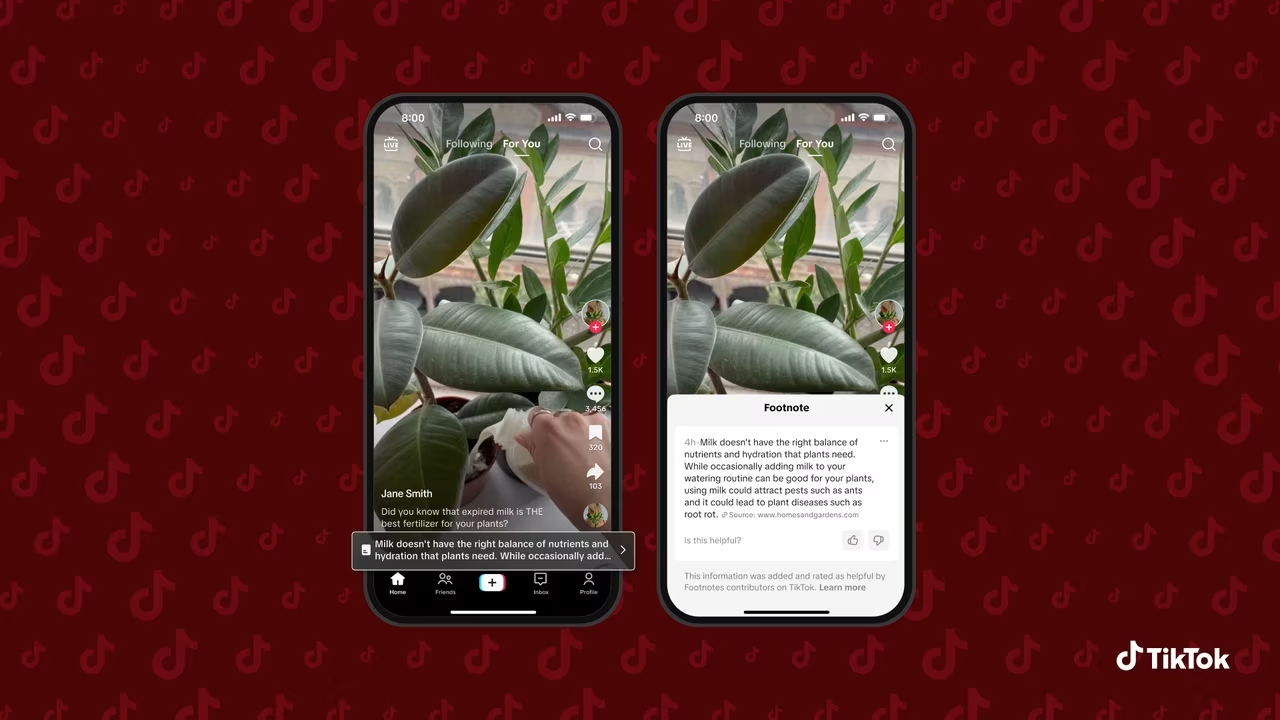TikTok Rolls Out Footnotes Feature in US to Boost Content Context
TikTok is rolling out its new 'Footnotes' feature to users across the United States, marking a significant stride in the platform's ongoing efforts to enhance content context and combat misinformation. This initiative, officially announced on July 30, 2025, by Adam Presser, TikTok's Head of Operations and Trust & Safety, empowers a curated group of community members to add factual notes directly to videos. It's a pretty big deal, isn't it especially with all the talk about online information integrity these days?
What Exactly Are Footnotes?
Who Can Contribute and How They Appear
This isn't just an open invitation for anyone to start adding notes, though. TikTok has been piloting this feature for a while, and they've already qualified nearly 80,000 U.S. users to contribute. The eligibility criteria are quite sensible: you need to be based in the U.S., have had an account for at least six months, and, crucially, possess no recent Community Guidelines violations. TikTok expects this pool of contributors to keep growing, and yes, U.S. users can still apply if they meet the requirements.
Now, how do these footnotes actually appear? It's not an instant process. The system is powered by what TikTok calls a "bridging-based system" – sounds a bit technical, I know – but it's designed to find a broad level of consensus among people, even those with differing opinions. Only footnotes that contributors widely agree are helpful will start to appear on videos for the broader U.S. community. And once they're visible, other users can also rate their helpfulness, feeding back into the system.
Initially, it might take some time for a footnote to go public. Think of it like a new engine warming up. As contributors become more familiar with the feature and more footnotes are written and rated across various topics, the system is expected to become smarter and more effective. This learning curve is natural, and TikTok anticipates that their ranking systems will improve over time, helping to close the gap between a footnote being written and it becoming widely visible. Patience will be key here.
Why TikTok Is Doing This: Platform Integrity
Why is TikTok putting so much effort into this? Well, it's no secret that social media platforms are under immense pressure to combat the spread of misinformation and ensure platform integrity. Footnotes represent TikTok's latest, and perhaps most ambitious, weapon in this ongoing battle. It builds upon their existing, extensive efforts, which include content labels, search banners, and a global fact-checking program. This new feature, however, shifts some of the responsibility to the community itself, adopting a more user-centric approach to help curb the spread of harmful content. It's a proactive measure, and frankly, a necessary one in today's complex digital landscape.
Moderating content at TikTok's sheer scale is incredibly complex, a challenge many platforms grapple with. To keep Footnotes useful and relevant, TikTok plans to deploy a combination of automated tools and human moderation to detect and remove any notes that violate their Community Guidelines. Plus, users will have the ability to report footnotes they believe break the rules. This multi-layered approach is absolutely essential to ensure the feature remains a tool for good, rather than becoming another vector for bad information or harassment. It's a delicate balance, for sure.
Broader Implications and Outlook
The rollout of Footnotes in the U.S. is particularly significant given the ongoing regulatory scrutiny TikTok faces in this key market. It demonstrates a tangible commitment to enhancing transparency and reliability, which could certainly play a role in broader discussions about the platform's future operations and its commitment to safety. This move aligns with a broader industry trend where major social media platforms are increasingly looking for scalable solutions to combat the deluge of misinformation. We've seen similar community-driven initiatives on other platforms, like X's Community Notes (formerly Birdwatch), which has had its own set of challenges and successes. Meta, too, has explored various fact-checking partnerships and context labels. It seems to be a growing consensus, doesn't it, that empowering users to be part of the solution, rather than relying solely on internal teams, is a path worth exploring?
The ultimate success of Footnotes will, of course, hinge on several critical factors: sustained user engagement from qualified contributors, the effectiveness of this nuanced consensus-based system, and TikTok's ability to swiftly and fairly moderate any misuse or attempts to game the system. Will users actively contribute and rate notes consistently? Can the 'bridging-based system' truly identify helpful, accurate information across diverse viewpoints and prevent weaponization by bad actors? These are big questions, and the answers will unfold over the coming weeks and months as the feature gains traction. But if it works as intended, Footnotes could significantly bolster TikTok's efforts to foster a more informed community and maintain user trust, especially in an environment where trust is paramount. It's an evolving space, and I'm genuinely interested to see how this plays out and what lessons other platforms might draw from TikTok's experience. This isn't just about TikTok; it's about the future of online information.
